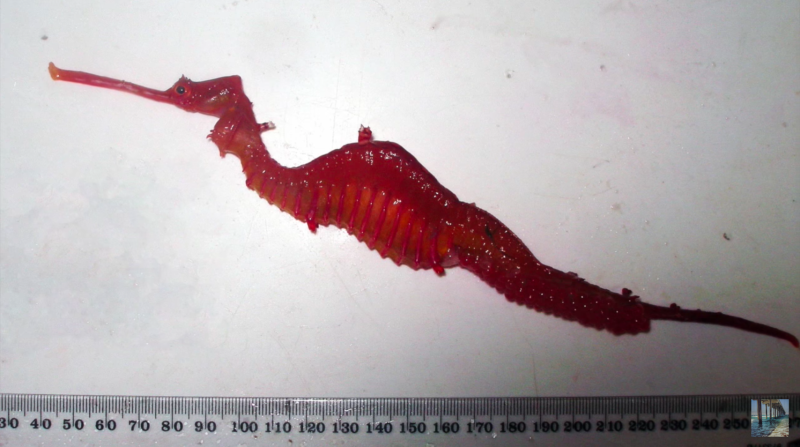Elusive Ruby Seadragons Show Off on Camera for First Time

An elusive ruby seadragon that was previously known only from museum specimens has been spotted alive in its natural habitat for the first time.
The scarlet-colored fish (Phyllopteryx dewysea) was first discovered as a distinct species in 2015, when researchers uncovered a misidentified preserved specimen while studying the two known species of seadragons — the orange-tinted leafy seadragon and the yellow-and-purple common seadragon. Since the discovery, scientists have sought the 9.4-inch-long (24 centimeters) ruby seadragon in the wild. Now, a team of researchers have observed two ruby seadragons on video for nearly 30 minutes in the waters off Western Australia, in the Recherche Archipelago.
Using a small remotely operated vehicle (ROV) in waters more than 160 feet (50 meters) deep, the researchers waited several days before spotting the rare fish. These observations of the ruby seadragons in the wild have led to a greater understanding of the unique species' anatomy, habitat and behavior, the scientists said. [Move Over, 'Game of Thrones': 9 Real-Life 'Dragons']
Beyond its distinctive red color, the ruby seadragon differs from the other two types of seadragons because it lacks leaf-like appendages. Before witnessing the fish in the wild, researchers were unsure if the ruby seadragon specimens in museums had lost their appendages over time while in collection.
"It was really quite an amazing moment," Josefin Stiller, a marine biologist with Scripps Oceanography and co-author of the new study, said in a statement. "It never occurred to me that a seadragon could lack appendages because they are characterized by their beautiful camouflage leaves."
Given that the ruby seadragon's habitat is deeper and more barren than that of its cousins', the ruby seadragon likely lost its leaf-like appendages through evolution, according to the researchers. Its ruby color is probably an evolutionary trait, as camouflage in the deeper, dimly lit waters, they added.
The scientists also discovered that the fish has a prehensile, or curled tail, similar to that of the seahorse and unlike the other seadragon species. Further study of the species is needed to determine why the curly tail evolved.
Get the world’s most fascinating discoveries delivered straight to your inbox.
The new research was published online today (Jan. 13) in the journal Marine Biodiversity Records.
Original article on Live Science.

